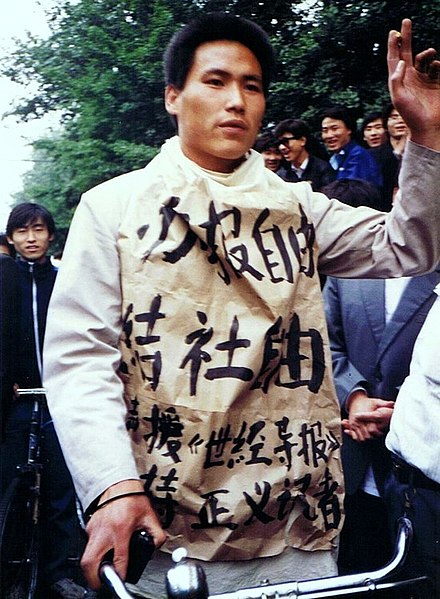Fang Lizhi was a Chinese astrophysicist, vice-president of the University of Science and Technology of China, and activist whose liberal ideas inspired the pro-democracy student movement of 1986–87 and, finally, the Tiananmen Square protests of 1989. Because of his activism, he was expelled from the Chinese Communist Party in January 1987. For his work, Fang was a recipient of the Robert F Kennedy Human Rights Award in 1989, given each year. He was elected an academician of the Chinese Academy of Sciences in 1980, but his position was revoked after 1989.
Fang Lizhi in 2010
The tombstone of Fang, Lizhi, located at East Lawn Palms Mortuary & Cemetery, Tucson, Arizona. Photographed in Jan 2017
1989 Tiananmen Square protests and massacre
The Tiananmen Square protests, known in China as the June Fourth Incident, were student-led demonstrations held in Tiananmen Square, Beijing, China, lasting from 15 April to 4 June 1989. After weeks of unsuccessful attempts between the demonstrators and the Chinese government to find a peaceful resolution, the Chinese government declared martial law on the night of 3 June and deployed troops to occupy the square in what is referred to as the Tiananmen Square massacre. The events are sometimes called the '89 Democracy Movement, the Tiananmen Square Incident, or the Tiananmen uprising.
1989 Tiananmen Square protests and massacre
Deng Xiaoping was the paramount leader of China.
Han Dongfang, founder of the Beijing Workers' Autonomous Federation
A photo of Pu Zhiqiang, a student protester at Tiananmen, taken on 10 May 1989. The Chinese words written on the paper say: "We want the freedom of newspapers, freedom of associations, also to support the 'World Economic Herald', and support those just journalists."






